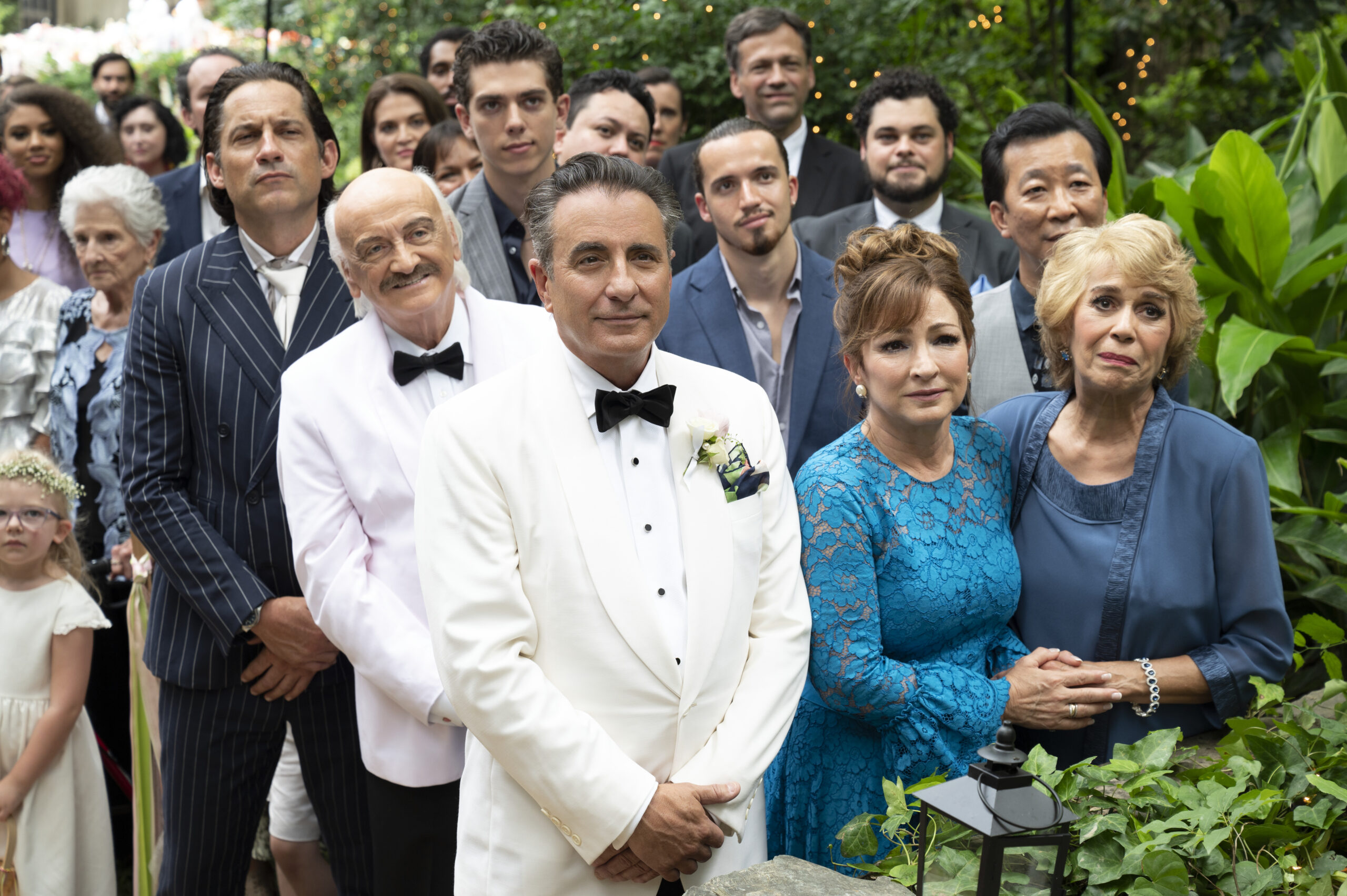When I was little, all I could look forward to in terms of rom-coms or family comedies were movies like How to Lose a Guy in 10 Days or The Parent Trap. All classics for their time, but now I’m grateful for films with BIPOC creatives at the fore. Father of the Bride is one of those – it’s not just promoting diversity by replacing a white family with an ambiguous family of color. Instead, the film makes a point to illuminate the cultural specificity of both families, challenging the usual flattening of Latin American communities and heritage.
Father of the Bride follows the Herreras, a Cuban American family from Miami. The central conflict is over the father, Billy (Andy Garcia), struggling with the fast-track wedding of his golden daughter, Sofia (Adria Arjona), and the strained relationships with his soon-to-be ex-wife and Ingrid (Gloria Estefan) and youngest daughter, Cora (Isabela Merced). But at the periphery, there’s an arc about integrating families that, while both Latinx, are staked as different. Their diversity is refreshing and necessary, a place to encourage distinguishments, stories, and truths rather than continue blanket stereotypes.

Sofia’s fiancé, Adam Castillo (Diego Boneta), is Mexican. Even without the movie telling us that the Castillos are Mexican and the Herreras are Cuban (although it does repeatedly), the audience can tell from the details like the food. For example, in one of the opening sequences where the Herrera family gathers, Ingrid is making ropa vieja (with too much onion as her mother chastises). When introduced to Adam, we learn his couple nickname with Sofia is quelite, an edible plant from Mexico with its name originating from the Nahuatl word quilitl. It’s these little attentions to detail that surround the families, not just shaping their culture into an all-in-one view of Latinidad. Not just foregoing specificity in favor of a colorblind approach, as I often see in US media, no matter how popular, like in Euphoria.
In another callout to the importance of specificity, early on Billy refutes the wedding planner’s slideshows for a “Latinx wedding.” By stating that flamenco is Spanish and the families of the couple are Cuban and Mexican, Billy is critiquing how cultural elements can become one-dimensional and interchangeable without the recognition of their history and attachments. I’ve seen it too many times in my life. When talking about Latinx people, Mexico predominates the discussion. We all become the same, and that sameness is seen as criminal, hypersexual, foreign. I understand how these notions and the oppressive policies that go with them dehumanize us – even amongst ourselves. Which leaves us with bad choices all around.

When paying attention to how the film frames its characters’ specific Cubanness and Mexicanness, I also noticed the pushbacks to the assumption that these groups are uniform. During a fight between Billy and Adam’s father, Herman, Billy calls Herman a “whitexican.” Now Billy is obviously fair-skinned too so he’s using this word to highlight the power and privilege of the Castillos, who are mega-millionaires in addition to having a very fair complexion. Honestly, I laughed when I read the subtitle because I was thinking the same thing. I watch telenovelas, and I am constantly disappointed by the representation. A part of me even groaned when I saw the Castillos. But with that proclamation, I was reminded that this family is not representative of all Mexicans. They are not supposed to represent my diasporic family in Texas or the family I have in Mexico.
The Father of the Bride is a film I will watch with my family, stacked as it is with recognizable names and faces like Gloria Estefan, Andy Garcia, and Isabel Merced. It’s also a film that I hope can encourage you to name, look for, and demand cultural specificities that challenge how we define our identities and privilege.

